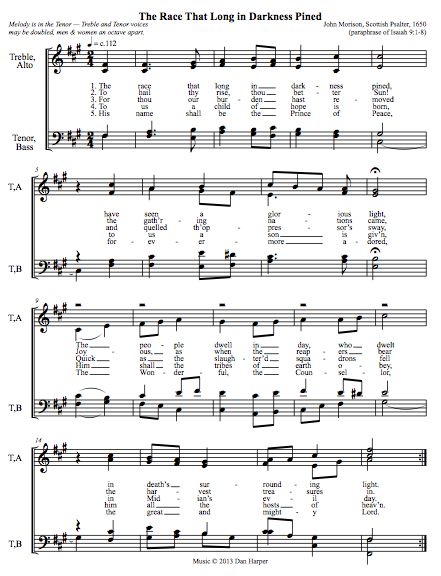It’s way too early for Christmas, but….
My favorite reading for the Christmas season is the King James translation of Isaiah 9.1-8. I love the rhythm of the language, and the beauty of the imagery. From a theological perspective, I’m not willing to say that Isaiah 9.1-8 predicts the coming of Jesus as the one and only Messiah (capital “M”) — I’m in the camp that says there have been and will continue to be messiahs (lower case “m”), of whom Jesus of Nazareth was one. Whatever my theological position, it’s a beautiful piece of prose.
Recently, I stumbled across a metrical paraphrase of Isaiah 9.1-8, done by John Morison for the 1650 Scottish Psalter. It’s not as good a rendition as the King James translation — but because it’s a metrical paraphrase, you could sing it, and how cool is that? So I wrote a hymn tune for it. A polyphonic tune. In Dorian mode. Between the music and the words, this would never be used as a hymn in a Unitarian Universalist congregation. But I had fun writing it, and there are one or two hymn geeks out there who might actually enjoy seeing it, so here it is:
(Click the image for a PDF. Complete words below.) Continue reading ““The Race That Long in Darkness Pined””

